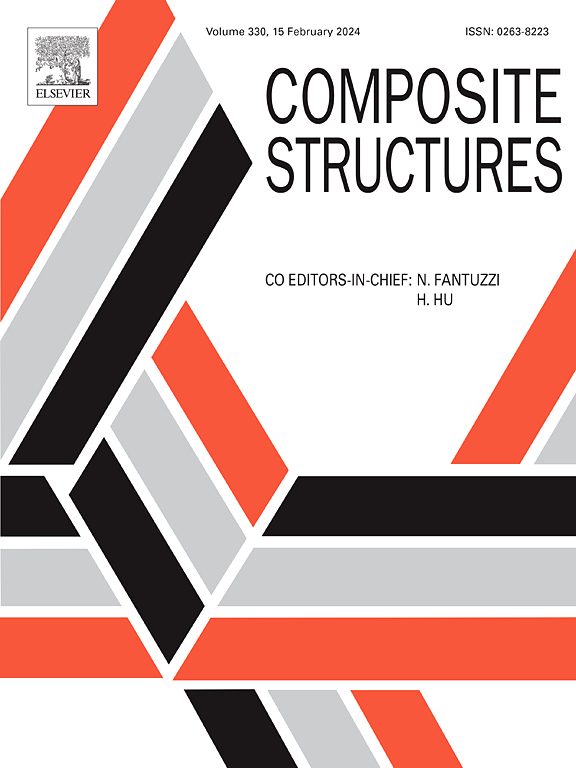Experimental and numerical study on draping behavior of recycled textile composite reinforcement with different weave patterns
IF 6.3
2区 材料科学
Q1 MATERIALS SCIENCE, COMPOSITES
引用次数: 0
Abstract
This study experimentally and numerically analyzes the draping of recycled fabric with different weave patterns. The recycled fabric was obtained from waste prepregs using a designed microwave thermal process. It is shown that the yarn width and density remain unchanged in the recycling process, but the fiber surface properties are changed, including a decrease in diameter and an increase in roughness. Due to the removal of sizing agents and the fiber diameter decrease, the recycling process also leads to a reduction in fabric thickness and areal density by about 9%. This change significantly modified the mechanical behavior of recycled fabrics compared to virgin fabrics, especially the bending stiffness of recycled fabrics is greatly reduced. Hemisphere and square box forming tests indicated that recycled fabrics tend to wrinkle more than virgin fabrics, and fabrics with a loose structure and less crimp lead to good drapability. A stress resultant shell approach gives simulation results that are in agreement with experiments, particularly the onset of wrinkling. This numerical approach takes into account tensile, in-plane shear, bending and friction behavior of textile reinforcement to reflect the change in fiber properties and weave structures, which proved to have a notable influence on fabric drapability.
求助全文
约1分钟内获得全文
求助全文
来源期刊

Composite Structures
工程技术-材料科学:复合
CiteScore
12.00
自引率
12.70%
发文量
1246
审稿时长
78 days
期刊介绍:
The past few decades have seen outstanding advances in the use of composite materials in structural applications. There can be little doubt that, within engineering circles, composites have revolutionised traditional design concepts and made possible an unparalleled range of new and exciting possibilities as viable materials for construction. Composite Structures, an International Journal, disseminates knowledge between users, manufacturers, designers and researchers involved in structures or structural components manufactured using composite materials.
The journal publishes papers which contribute to knowledge in the use of composite materials in engineering structures. Papers deal with design, research and development studies, experimental investigations, theoretical analysis and fabrication techniques relevant to the application of composites in load-bearing components for assemblies, ranging from individual components such as plates and shells to complete composite structures.
 求助内容:
求助内容: 应助结果提醒方式:
应助结果提醒方式:


